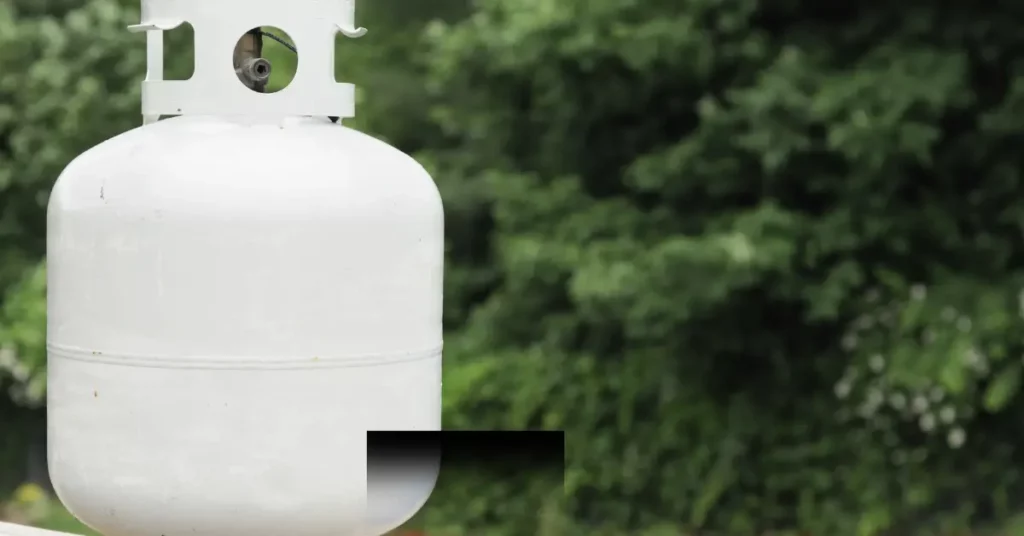This post may contain affiliate links. If you use these links to buy something we may earn a small commission. Thanks.
Grilling is a beloved pastime for many, and propane is often the fuel of choice for its convenience and efficiency. But have you ever wondered what kind of propane is in the tank you use for grilling? Understanding the type of propane and its properties can help you grill safely and effectively. Let’s dive into the details.
What is Propane?
Propane is a type of liquefied petroleum gas (LPG) known for its versatility and clean-burning properties. Chemically, it’s a hydrocarbon compound with the formula C3H8. While propane itself is colorless and odorless, manufacturers add a distinct odorant, typically ethyl mercaptan, to help users detect leaks.
Propane’s ability to remain liquid under pressure and convert to gas when released makes it an ideal fuel for grilling and other applications. Its portability and efficiency have made it a staple in backyard BBQs worldwide.
Types of Propane Used in Grilling
When it comes to grilling, there are two primary types of propane you might encounter:
1. Commercial Propane
This is the most commonly used type of propane for grilling. It contains a mix of propane and small amounts of other hydrocarbons, such as butane and propylene. While suitable for most applications, it may not offer the same level of purity as other grades.
2. HD-5 Propane
HD-5 propane is a higher-purity grade that consists of at least 90% propane and no more than 5% propylene. This type is ideal for grilling due to its consistent quality and clean-burning characteristics. HD-5 propane is the standard for consumer-grade propane in the United States.

The primary difference between these two types is the level of purity. HD-5 propane is more refined, ensuring a cleaner burn and fewer impurities that could affect grill performance.
How Propane is Stored in Grill Tanks
Propane used for grilling is stored in liquid form under pressure in specially designed tanks. These tanks are typically made of steel or aluminum and are equipped with a valve system to control the flow of gas. When you open the valve, the liquid propane inside the tank vaporizes and exits as a gas, ready to fuel your grill.
The pressurized environment of the tank ensures that the propane remains stable and safe until it’s released for use. This process makes propane an incredibly efficient fuel source for grilling.
Standard Grill Propane Tanks
For grilling, the most common tank size is the 20-pound cylinder, often referred to as a “barbecue tank.” These tanks are:
- DOT-approved for safety.
- Equipped with an overfill protection device (OPD) to prevent accidental overfilling.
- Refillable and exchangeable at many locations, making them convenient for regular use.
Other sizes, such as 1-pound disposable cylinders, are also available for portable grills and camping use.
Why HD-5 Propane is Ideal for Grilling
Using HD-5 propane in your grill ensures:
- Cleaner Burn: HD-5 propane produces fewer residues, reducing the risk of clogging burners.
- Hotter Performance: A higher propane concentration provides consistent and efficient heating.
- Even Cooking: With fewer impurities, the flame remains steady, ensuring even cooking across your grill surface.
If you want the best grilling experience, HD-5 propane is the recommended choice.
How to Identify the Propane in Your Tank
Not sure what type of propane your tank contains? Here’s how to find out:
- Check the Label: Most tanks or refill stations will indicate the grade of propane provided.
- Ask Your Supplier: Reputable propane suppliers can confirm the type and purity of propane they offer.
- Look for Certifications: Tanks filled with HD-5 propane often carry labels or certifications verifying their contents.
By purchasing propane from trusted sources, you ensure a high-quality grilling experience.
Safety Considerations
Propane is safe when handled correctly, but here are some important safety tips:
- Odor Detection: The added odorant helps you detect leaks. If you smell gas, turn off the tank immediately and check for leaks.
- Proper Storage: Store propane tanks upright in a well-ventilated area, away from direct sunlight and heat sources.
- Inspection: Regularly inspect your tank for signs of damage or rust, and replace it if necessary.
By following these precautions, you can enjoy worry-free grilling.
Environmental Impact of Propane
Propane is considered a cleaner-burning fuel compared to charcoal or wood. It produces fewer greenhouse gases and particulate emissions, making it an environmentally friendly choice for grilling. Its efficiency also means less waste, contributing to a more sustainable BBQ experience.
Conclusion
The propane in your grill tank is typically either commercial-grade or HD-5 propane, with the latter offering superior purity and performance. Understanding the type of propane you use can enhance your grilling experience, ensuring cleaner burns, consistent heat, and safer operations. By choosing high-quality propane and following proper safety practices, you can elevate your outdoor cooking to new heights.
So the next time you fire up your grill, you’ll know exactly what’s fueling your culinary creations.
